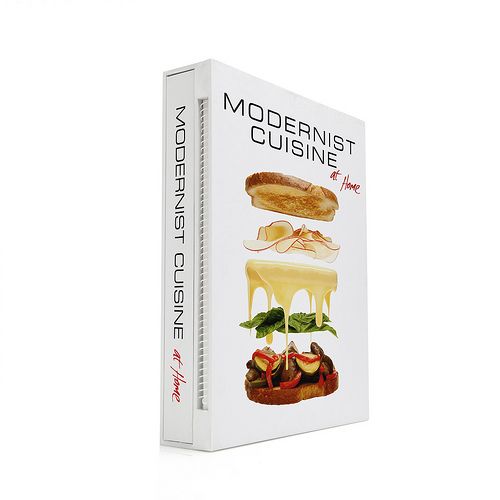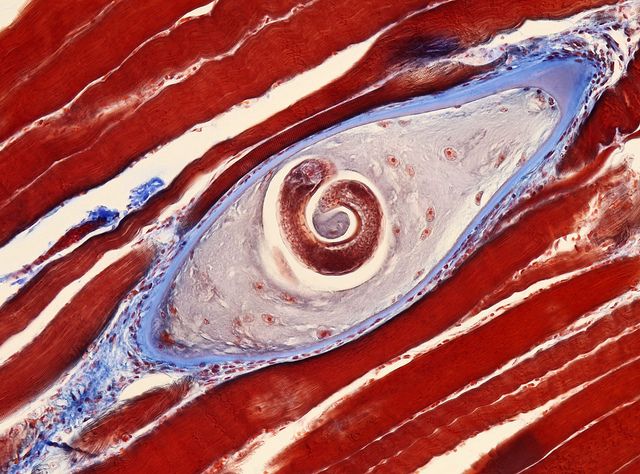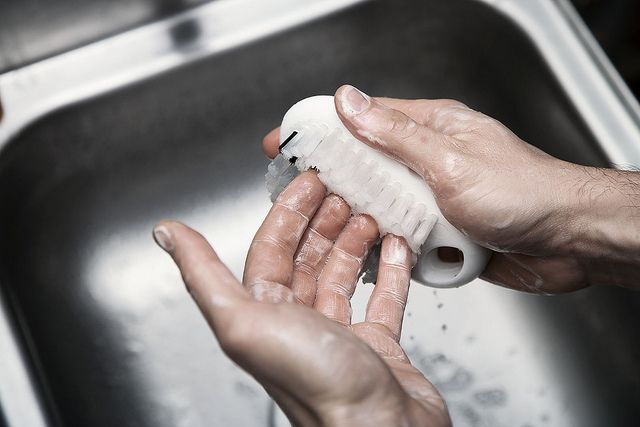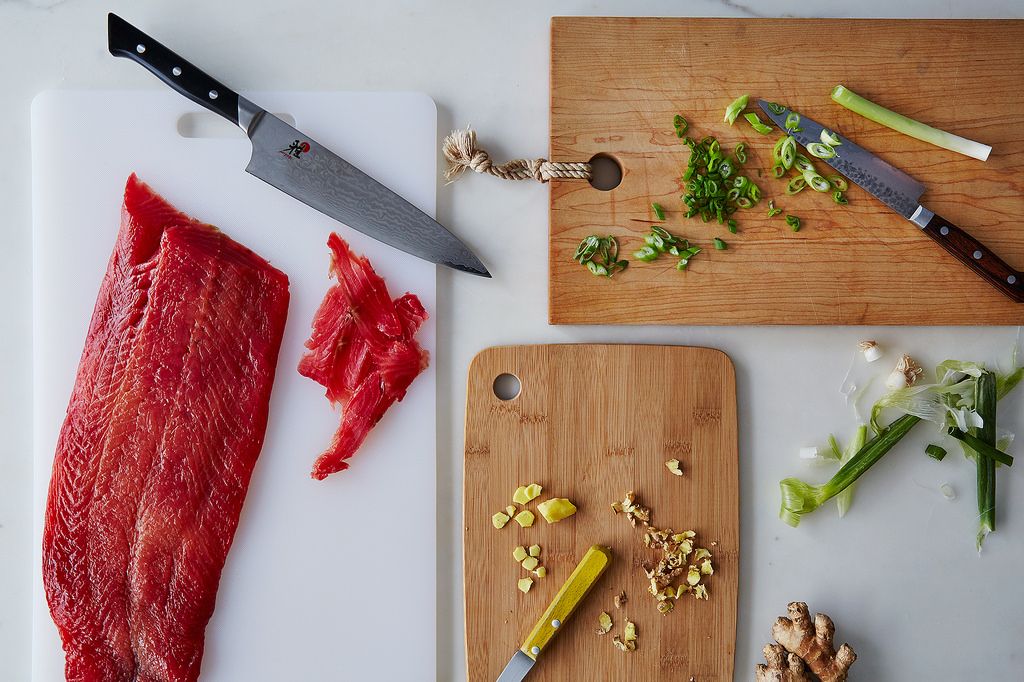There's a moment right before you take a bite out of a big spoonful of cookie dough where you remember that childhood reprimand: "Raw egg will make you sick!" While we're still not sure if that's fact or just Mom-speak for "stay away from the treats," there are plenty of times we need to consider kitchen safety.

So we're revisiting this post from The Modernist Cuisine team, where they share 7 essential food safety tips (and debunk a few myths along the way).
Most cookbook authors skip over food safety. Many may feel it would be like including a recipe for ice—they assume that people know how to wash their hands and utensils.
But foodborne illness is both one of the most common and preventable kinds of sickness, and we feel strongly that cooks should understand the basics of how to feed themselves and others safely. Our new book Modernist Cuisine at Home covers the essentials that can not only save your food from ruin, but also save you a trip to the emergency room.
Here are a few tips to get started:
Myths and Unpleasant Truths
Much of what you’ve probably heard about foodborne illness and its prevention is out-of-date, misguided, or just plain wrong. People often tend to worry, for example, about germs and parasites that are inside the food, having infected the animal or plant while it was alive.
However, meat inspection systems in the U.S. have essentially exterminated the burrowing parasite trichinella in domesticated animals. Thanks to this and the natural immune systems of animals, the interior of fully intact pieces of meat are likely to be safe, unless the meat has been punctured (or ground).

Trichinella: Not the villain it used to be.
This is why it is necessary to start with what makes most people squeamish: poop. The unpleasant truth is that more than 80% of food poisoning cases in the U.S. are caused by fecal contamination: tiny bits of poop on the outside of the food.
This is as true for poultry and pork as it is for beef and lamb, but many people continue to cook leathery chicken breasts and pork chops, believing it’s the only way to safely consume them. This is likely because the FDA’s and USDA’s guidelines are oversimplified, recommending safe cooking temperatures, but completely ignoring cooking time, the other crucial factor in killing pathogens.
A Kinder, Gentler Way to Cook Meat
The widely accepted goal in cooking meats is to kill 99.99997% of a certain kind of bacteria (typically Salmonella). You can do that by cooking all of the meat to an FDA-recommended temperature for a second or two, or by maintaining a lower temperatures—one much less destructive to the flavor and texture of meat—for a much longer period. A medium-rare slow-cooked pork chop can be just as safe as one done to death on the grill, but much more pleasant to eat.

For a bigger version of this photo, click here.
Holding a precise temperature in a water bath is an easy way to pasteurize food, exploiting the same technique Louis Pasteur invented for wine and beer that is now widely used for milk, cheese, and juice. You can pasteurize a typical chicken breast without drying it out, for example, by heating its thickest part to 140° F and then holding it at that temperature for about 12 minutes. (Fish are a special case: When cooked to pasteurization temperatures, fish become unpalatable. One workaround is to freeze fish solid before cooking it sous vide, thereby killing any anisakid nematodes and scomboid bacteria that are in it.)
We advocate using a sous vide water bath because you can maintain a constant temperature. However, you could also use oil instead of water. Or you can, for example, cook a frozen steak in the oven for an hour at 200° F (we did this with the New York Times), but it’s harder to maintain constant temperature in an oven, and convection is slower than conduction.
More: The Modernist Cuisine team explains heat transfer's tricky ways—and how to stop burning so much toast.

7 Essential Food Safety Tips
1. Proper hand-washing is your very best defense against foodborne illness. Treat the kitchen like an operating room, and scrub up like you’re preparing for surgery. Use a brush to get under your fingernails, and wash your hands with soap under running water for a full 30 seconds.
2. The majority of large foodborne illness outbreaks in recent years have been in raw fruits, nuts, or vegetables—in 2006, for example, researchers traced a large-scale E. coli outbreak back to wild boars who had wandered into spinach fields. Always wash produce, even if it has been triple-washed, bagged, and sealed. We use a solution of water with 10% vinegar (10:1). You can also use a store-bought organic solution.
3. Scour your sink regularly. In Modernist Cuisine, we recommend mixing 1 gallon of water with 1 tablespoon of Clorox Bleach for most surfaces for normal disinfection. Make sure that the surface is in contact with the solution for at least two minutes, and let it air-dry (do not rinse or wipe). For heavier disinfection, use 3 tablespoons per gallon of water. In this case you will have to rinse after with sterilized water.
4. To rid your sponge of microbes, microwave it for one minute or toss it in the dishwasher with the dryer setting on.
5. Faucets and doorknobs are teeming with germs, so use a paper towel when touching them.

6. Wash your cutting board and other equipment between each use. If you have chopped raw brussels sprouts that were carrying pathogens, the cooking process may make them safe, but you may still have left germs behind on your cutting board and knife. We use wood cutting boards at The Modernist Cuisine Lab in order to take advantage of their natural antibacterial properties. When cut, wood secretes antimicrobial compounds that help keep even the deepest fissures clean.
More: Dig deeper with our guide to choosing the right cutting board.
7. Remember that no technique is foolproof—good hygiene and cooking techniques lower the germ count enough that a normal immune system can take care of what remains. Never serve food cooked at low temperatures to people who are immuno-compromised. It is, after all, better to be safe than sorry.
What are your best tips and tricks for keeping your kitchen clean (and safe) during the holidays?
Photos: Book - Chris Hoover; Trichinella - Nathan Myhrvold; Chicken & Hand-washing - Ryan Matthew Smith / Modernist Cuisine, LLC; Cutting Boards - James Ransom






See what other Food52 readers are saying.